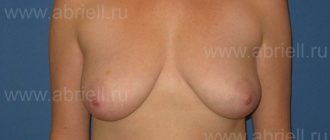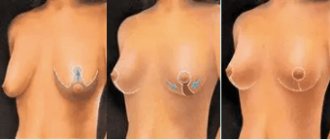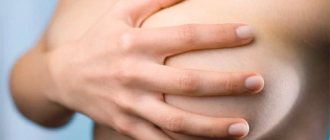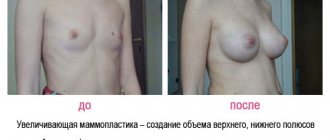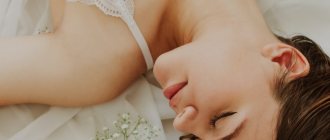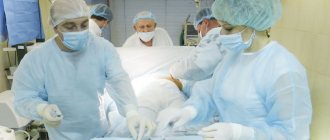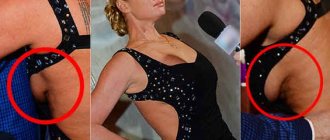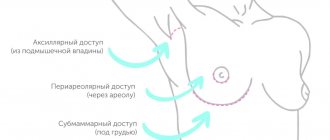Sagging breasts are one of the most common problems caused by a number of different reasons. Among the reasons influencing the appearance and severity of ptosis are age-related changes, sharp fluctuations in body weight, as well as previous pregnancy and breastfeeding.
Regardless of the reasons for the prolapse, mastopexy will help restore the lost aesthetics of the breast. Mastopexy in mammoplasty is called breast lift surgery. The operation can be performed either alone or in combination with augmentation with implants. The final result largely depends on how the rehabilitation period went and how responsible the patient was.
How is mastopexy performed?
Correction of prolapse is performed using one of the following methods:
- lipareolar,
- vertical,
- T-shaped.
The periareolar incision is located along the entire edge of the areola and is carried out in a circular motion. Vertical adds a slit from the bottom edge to the crease under the bust. Finally, the T-shaped or anchor, in addition to the previous ones, also contains a horizontal cut in the fold itself. The technique is chosen by the surgeon based on the patient’s individual situation. Depending on the degree of prolapse (ptosis), the number of incisions and the volume of excised tissue increases.
The periareolar approach is indicated for mild ptosis, and the anchor approach is recommended for patients with naturally large breasts and a severe degree of ptosis.
Technical aspects of breast lift surgery
Breast lift surgery is performed under general anesthesia and takes an average of 2-3 hours. Although in simple cases it is possible to perform mastopexy in a shorter time. It is very important for the surgeon to be able to “seat” the patient during the operation. This is necessary to assess the shape of the future breast in the otostatic position. Fortunately, modern operating tables allow you to perform a similar maneuver with one press of a remote control button.
Usually, in order to permanently preserve the “war paint” until the end of the breast lift operation, instead of fancy imported markers (which are washed off or smeared during the treatment of the surgical field), I prefer to use a “strong” solution of potassium permanganate of our domestic production. As they say, two in one: useful (antiseptic) and visual.
Next, when performing a breast lift, a tourniquet is applied to the base of the mammary gland in order to obtain maximum straightening of the areola skin under the pressure of the bulging breast tissue. The concept of “tourniquet” (French tourniquet) in medicine is a hemostatic tourniquet in the form of a fabric or leather loop, twisted using a lever (stick). In particular, during mammoplasty, twisted gauze is used as a tourniquet, pulled under the base of the mammary gland. To form a “new” areola of the appropriate diameter, special markers are used. These are metal circles (in the photo in the lower right corner) of a certain diameter. As a rule, we use markers with a diameter of 4.0 to 4.6 cm in diameter, depending on the wishes of the patient and the aesthetic correspondence between the size of the breast and the diameter of the future areola.
In this case, we used an areolar marker with a diameter of 4.2 cm. The main points on the areola at 12, 3, 6 and 9 o’clock must be marked. In the future, we will need this for the most accurate, uniform comparison of the edges of the wound.
The next step is subcutaneous infiltration with a solution of adrenaline along the boundaries of the future incision. This helps not only to make the correct skin incision, but also to spasm the blood vessels, which means less bleeding.
A skin incision around the areola. The scalpel blade should be directed strictly perpendicular to the skin, which is facilitated precisely by preliminary infiltration.
The skin incision along the boundaries of the marking is completed.
The stage of de-epidermization of the skin (removal of its surface layer to the dermis itself) around the areola. A sign of correctly performed de-epidermization during breast lift is the appearance of blood “dew” - droplets of blood on the dermis of a whitish color. If de-epidermization is performed incorrectly (removing the dermis itself down to the subcutaneous fat), then the capillary network of vessels responsible for the blood circulation of the SAH can be damaged.
The SAH has a well-developed network of feeding vessels running from the periphery to the center of the chest and forming a dense subdermal plexus. In general, the SAH receives a double blood supply - directly from the adjacent parenchyma of the gland and through the subdermal plexus. Therefore, the surgeon performing a breast lift has the opportunity to cut out the SAH on both the dermal and parenchymal feeding pedicle. The types and methods of cutting out dermoglandular “legs” will be discussed in more detail in the subsequent photo report dedicated to reduction mammoplasty. Unlike reduction matoplasty, with mastopexy the risk of SAH ischemia (circulatory impairment) is minimal, since we preserve both the subdermal and parenchymal blood supply.
Next, a flap (“tongue”) on a feeding pedicle is cut out from the tissue of the lower slope of the mammary gland. We will need this “tongue” to move it higher and “put it” under the gland.
Detachment of breast tissue (m.g.) from the pectoralis major muscle (PMM), covered with fascia, is performed. The level of detachment is the upper border of the m.zh. A central tunnel about 6–8 cm wide is formed under the mammary gland. In this case, the detachment should not be carried out too widely to the sides so as not to damage the branches of the arteries (superior external and internal perforating) and not to disrupt blood circulation in the area of the SAH.
After the detachment is completed, we carry out plication (gathering) of the tissues of the upper slope of the breast. by moving and fixing it to the fascia of the femoral bone. To do this, we apply several separate interrupted sutures with absorbable threads (the so-called “suspension threads”). This allows you to “fill” the upper slope of the chest to some extent. .
Deep-epidermization of the skin is performed on the lower flap - the “tongue”. We deliberately do not do this immediately after isolating the tongue. The skin “island” allows us to correctly orient ourselves and not twist the thin feeding “leg” of the flap.
Next, we fix the flap of the lower slope to the posterior layer of the capsule (proper fascia) of the mammary gland. This maneuver is called “autoaugmentation” - increasing the volume with one’s own tissue. Of course, in essence, there is no increase in the total volume of the gland, since “changing the places of the terms does not change the sum.” And yet, with this maneuver, we to some extent reduce the ptosis factor, which is the sagging tissue of the lower slope of the mammary glands.
Most authors who use a lower flap for autoaugmentation (L.Ribeiro and others) in the process of breast lift suggest fixing this flap to the fascia of the femoral bone (a) or even pass it under the muscle “strap” (R.Graf) (b), motivating because this technique allows you to steadily fill the upper slope of the chest. Unfortunately, long-term follow-up of patients does not confirm the stability of the effect of this maneuver. In addition, fixation of the flap to the femoral bone in some patients leads to tissue retraction in the lower part of the vertical incision when raising the arms.
After all “deep internal work” is completed, temporary sutures are placed on the edges of the areola and on the upper edge of the vertical incision.
The assistant lifts the mammary gland with a hook, simulating an orthostatic position. We stitch the lateral “columns” of the mammary gland with separate interrupted sutures using absorbable thread (a), the stitching stage is completed (b).
Temporary sutures are placed on the skin. The most exciting moment for the operating team is coming.
The patient was transferred to an orthostatic position for a preliminary assessment of the shape of the right breast - the difference between the right (“collected”) and left breast was clearly determined. (A). It is very important to evaluate the shape of the breast in the position of orthostasis (the effect of gravity), even if the “collected” breast looks great in the lying position. Additional “adjustment” of the shape of the breast: small excess skin around the areola was marked (with potassium permanganate) and it was determined that it was necessary to remove some skin in the area of the inframammary fold to obtain optimal roundness of the lower slope of the breast (b).
Excess skin around the areola is excised. As you can see, our “notes” on the areola were preserved during the operation. They will help us correctly form the roundness of the future areola.
Symmetrically with the marks on the areola, marks are projected onto the edges of the skin incision - at 12, 3, 6, 9 o'clock and in the middle between them. This will allow us to distribute the seams as evenly as possible and bring the shape of the areola closer to the “ideal” circle. Applying a Hammond circumareolar suture using Gore-Tex thread on a straight needle at the final stage of breast lift. We deliberately use Gortex - it is a non-absorbable thread (the areola will not spread in the future), smooth and inert (does not cause inflammatory reactions in the tissues). Additionally, a marked area of skin at the bottom of the vertical seam will be removed.
Final assessment of the result of breast lift in the orthostasis position before skin suturing. You can see the difference between the “collected” right and “untouched” left mammary glands. Mastopexy on the left will be performed in a similar way.
The final appearance of the mammary glands after skin suturing. Rubber outlets (drains) are left in the wound. To prevent circulatory problems in the areola, papaverine injections were made.
Technique of the operation
Immediately before correction, the surgeon applies markings according to the chosen technique. During the operation, incisions will be made along these markings. During the intervention itself, the patient is under anesthesia. The type and intensity of anesthesia is determined by the anesthesiologist during a consultation before the operation, based on the state of health and the wishes of the patient herself.
The doctor changes the position of the nipple-areolar complex, excises excess tissue, then applies sutures and a sterile fixing bandage. A drain is also placed and compression garments are put on. From this moment, the recovery period begins, or rehabilitation after a breast lift, the success and duration of which largely depends on the patient herself.
Anchor breast lift
I have been dreaming of having breasts since 2007, when my modest second remained in the vastness of breastfeeding beyond the horizons of pumping and weight gain/loss. I really didn’t want an anchor lift (and 4 out of 5 surgeons with whom I had a consultation suggested doing it). And only one of them, after hesitating for a long time, agreed to put implants in what I had, and then tighten the skin along the halos. The operation in 2 stages took place in December 2015 and October 2016. After the first operation, the left breast went up (it seemed to be “crushed” by the implant), during the second operation, during the halo lift, the left implant was removed and reinstalled, the pocket was reshaped. And it still didn't work out. After the second operation, after another 4 months, the pocket was “sutured” under local anesthesia. I present photos before and after the first two operations. I took a break for a couple of years, psychological and physical. The chest was far from ideal. In search of “the boobs of my dreams,” I spent a long time on IG looking through the profiles of plastic surgeons, Grudko, Melnikov, Gigoberidze and many others... so then I subscribed to Khachatryan. And oh God, bingo!!! 100 points out of 10. Successful alterations and the shape that I wanted all my life. Well, dreams should come true. In the fall of 2022, I asked for a consultation, waited a month and a half (because I have a difficult schedule, and not because I can’t get through to a doctor) and at the end of October I saw the doctor. All the i's were dotted right away. The case is complex, the result will be nuanced. Anchor lift, replacement of implants (Allergan cost 375 ml), asymmetry (due to curvature of the spine), skin is not in the best condition (stretch marks), a small strip of halo pigment will remain along the vertical seam. But to be honest, these are all minor things, a “scratch” on the Lamborghini. Now the stitches are healing, I’m waiting for them to lighten up and get a tattoo. I will remove the remaining pigment from the halo with a laser. I waited a long time for confirmation of the date of the operation (I needed the last week of December), but I was lucky, everything was confirmed. She passed the tests quickly, and the time of hospitalization successfully fell in the morning. Academician Roitberg's clinic on Mayakovskaya was wonderful, although the registration process took a long time. I arrived at 08:00, spent a long time looking for a pass, walked around the departments, waited for a room, checked in and took photos in one, after the operation they brought me to another, waited for my things. A little hectic and seemingly disorganized, but in the end it was all smoothed out with a gorgeous result. The doctor is very busy, his busyness and “stardom” are understandable, the doctor is advertised. There are many people who want to see him for surgery or consultation. Without SMM it is now difficult to develop your business. And private plastic surgery is first and foremost a business, and only then medicine. Despite all these nuances, the doctor is very sincere, pleasant to talk to, and a professional in his field. After the operation, the doctor's assistant and surgical nurse did not leave me for a minute. Everyone was in touch, the medical staff came on demand. I spent a day in the ward, and the day after the operation I took a taxi home. The doctor’s “seamless” technique is magic and believe me, I have something to compare it with. No plasters, threads, dressings, treatments, etc. On the 2nd day I took a shower, on the 6th day I went to work. There were restrictions on sports - 3 months. I wore corrective underwear for about 3 weeks, after which I wore only sports tops. Implants installed: Mentor, 500 ml, round, high profile. I must say that Allergan was intact, there was a contracture (especially on the left), everything was corrected.
How is recovery going?
The underwear worn after surgery plays an important role in the rehabilitation period. Compression garments must be worn around the clock for three months, so you should make sure you have a replacement pair in advance. Underwear helps fix the breasts in a new position, preventing possible displacement. After the first ten days, it can be removed for hygiene procedures, but for the rest of the time it is prohibited to be without underwear.
In the first days after surgery, it is best to sleep on your back, in a reclining position. To do this, you can place a high pillow or bolster under your back. Sleeping on your side or stomach is strictly prohibited.
It is also advisable to at least temporarily give up bad habits, in particular alcohol and smoking. Intimate life is also prohibited for at least several weeks to prevent injury to the chest.
Degrees of ptosis of the mammary glands:
Surgeons use the Regnault classification:
- Pseudoptosis: despite drooping breasts, it is not ptosis as such. Most of the gland is located below the inframammary fold, and the areola and nipple are located above.
- Stage I: the nipple is either at the level of the fold or below it, less than 1 cm.
- Stage II: nipple below the fold by 1-3 cm.
- III degree: the nipple is located either at the lowest pole of the gland, or 3 cm below the fold.
Operations can be performed starting from “pseudoptosis” at the request of the patient.
What else you need to know about recovery
During the first ten days, showering is not permitted. It is also forbidden to touch the breast, put pressure on it, knead it or otherwise exert any influence. A ban on the gym, swimming pool, sauna, beach, bathhouse and solarium is imposed for three months. The operated area must be protected from ultraviolet radiation and stress, so you will have to give up anything that could potentially affect the result of the operation, even housework associated with significant physical activity.
If the patient complains of severe pain, the surgeon may prescribe pain relievers. Antibiotics are also prescribed to prevent the development of a bacterial infection. Self-prescribing medications, as well as using any other means without consulting your surgeon, is strictly prohibited!
Breast lift: recovery period
Drains after a breast lift are usually removed the next day during dressing. Next, the patient is recommended to wear supportive compression garments (tops), treat the seams with alcohol, and dry them with potassium permanganate. To reduce swelling and resolve bruises and hematomas, ointments (traumeel, bepanthen, lyoton, etc.) are used. Showers are allowed for 3-4 days. Heavy physical activity, sports, visiting baths, saunas are not recommended for 3 weeks. The sutures cannot be removed, as the threads are made of absorbable material. Only the “tails” of the threads sticking out on the skin are trimmed on the 8-10th day. Next, the patient glues special Steri-strip strips to the edges of the wound for 3-4 weeks to reduce the load on the sutures and better scar formation. After 1.5-2 months, we recommend wearing special silicone patches (Mepiform, etc.).
How long does rehabilitation take?
Recovery from mastopexy takes about three to five months. During this time, tissue healing occurs and a new bust position is formed. The timing of regeneration is individual and depends on the characteristics of the patient’s body. The speed of recovery can be affected by age, health status, the presence of diseases, hormonal indicators and the speed of recovery processes, which is genetically determined.
Vertical breast lift with implants, performed at the Osnova clinic.
To speed up the recovery process, the patient must strictly follow all recommendations and observe the prohibitions of her operating surgeon. Breast lift and rehabilitation after it are not as complicated as other types of plastic surgery, but this does not mean that you can be irresponsible with your doctor’s prescriptions. The final result is summed up after 9-12 months, when all restoration processes are completed and the breasts take their final shape and position.
Contraindications
There are not many contraindications for non-surgical procedures. But still, you shouldn’t forget about them.
- Pregnancy
- Breastfeeding period
- Presence of cancer
- Autoimmune diseases
- Skin diseases
- Diseases of the cardiovascular system
- Elderly age.
Don't forget about this. And even more so, keep silent about any of these circumstances before the procedure. Not only will you not achieve the desired result, but you can also significantly harm your health.
Result
As a result of mastopexy, the breasts will restore their natural beauty and become firm and toned again. The patient regains confidence in herself and her attractiveness. After the bans are lifted, you can return to normal life - sports, swimming pool, solarium, and so on.
It is advisable to monitor your figure and avoid sudden changes in weight. Also, in the first year you should refrain from pregnancy and breastfeeding. After vertical and T-shaped mastopexy, the opportunity to feed the child is lost, as the risk of mastitis increases significantly. Feeding is possible only after periareolar surgery, but failure to comply with the required period between surgery and pregnancy will lead to loss of the resulting aesthetics.
The final result depends not only on the skill of the surgeon. The result is largely influenced by how attentively the patient paid attention to the rehabilitation period and following all the rules of recovery. If the doctor’s prescriptions are strictly followed, the healing speed will be as fast as possible, the scars will be invisible, and the aesthetics will be excellent.
Plastic surgeons at the clinic
Davydov Alexander Sergeevich
Experience - 14 years
Head of the Department of Plastic Surgery. Leading plastic surgeon. Certified specialist in plastic surgery and general surgery. Participant in master classes on plastic surgery.
Yakimov Dmitry Konstantinovich
Experience - 38 years
Doctor of the highest category. Candidate of Medical Sciences. Member of the Society of Plastic Surgeons. Author of more than 30 works in the field of surgery, teacher at the Military Medical Academy.
Gvaramiya Eka Yurievna
Experience - 17 years
Participant of congresses, conferences and seminars on plastic surgery. Priority areas: mammoplasty (breast plastic), blepharoplasty, tummy tuck (abdominoplasty), liposuction, lipofilling, face lift, lip plastic, ear plastic, intimate plastic, body plastic, reconstructive plastic, solving aesthetic problems.
Abzaleva Guzel Rinatovna
Experience - 15 years
Participant of congresses, conferences and seminars on plastic surgery. Priority areas: blepharoplasty, lipofilling, intimate plastic surgery, abdominoplasty, breast plastic surgery.
Kalita Valeria Denisovna
Experience - 4 years
Participant of congresses, conferences and seminars on plastic surgery. Priority areas: mammoplasty, blepharoplasty, liposuction, abdominoplasty.
Makarov Andrey Vitalievich
Experience - 18 years
Certified specialist in plastic surgery, maxillofacial surgery, otolaryngology, general surgery. Participant in master classes on facial plastic surgery and rhinoplasty in Russia and abroad.
Garifulin Marat Sagitovich
Experience - 19 years
Priority areas: mammoplasty and gynecomastia (including in men), waist shaping, blepharoplasty, otoplasty, abdominoplasty.
Complications
Lipofilling is considered one of the safest and least traumatic procedures. But in very rare cases, a number of complications may occur, including infections, lumps, seromas, cysts, and the like. By going to an unverified clinic or an unqualified doctor, you can increase the risk of developing these complications tenfold. But even a very experienced surgeon cannot guarantee a 100% absence of side effects. Sometimes the appearance of unpleasant consequences is influenced by certain innate characteristics of the body.
It is worth noting that immediately after surgery, bruising, swelling and redness of the skin may occur. These are not complications, but a normal reaction of the body to intervention. You should consult a doctor about this only if these consequences do not go away for a long time.
Preparation for surgery:
To perform the operation, you will need not only standard blood tests, urine tests and an ECG (since general anesthesia is used). It is advisable for the patient to visit a mammologist, have an ultrasound of the mammary glands or mammography to eliminate possible risks. During the examination, the plastic surgeon will assess the severity of ptosis, tissue elasticity, discuss the likelihood of pregnancy and lactation in the future (if there are indications for removing part of the gland itself), tell how the suture will be positioned and give recommendations for preparation.
How to stop being afraid of scars
Let's be honest: you are afraid of large scars on your body. On the chest, even more so, because this is the epicenter of female sexuality. Many women perceive stitches as a sacrifice to a beautiful shape and have difficulty reconciling themselves with the need to have them.
I want to give you a different perspective.
- First: let's start with the aesthetic perception of the bust. The shape of the bust is more important than the condition of the skin surface. Let this be a discovery for you, but men pay attention to the shape of the breast and the shape of the areola.
- Second: the visibility of seams can be reduced. If sutures are applied correctly and properly cared for during the rehabilitation period, within a year, instead of the inverted letter T, you will see barely noticeable whitish stripes.
